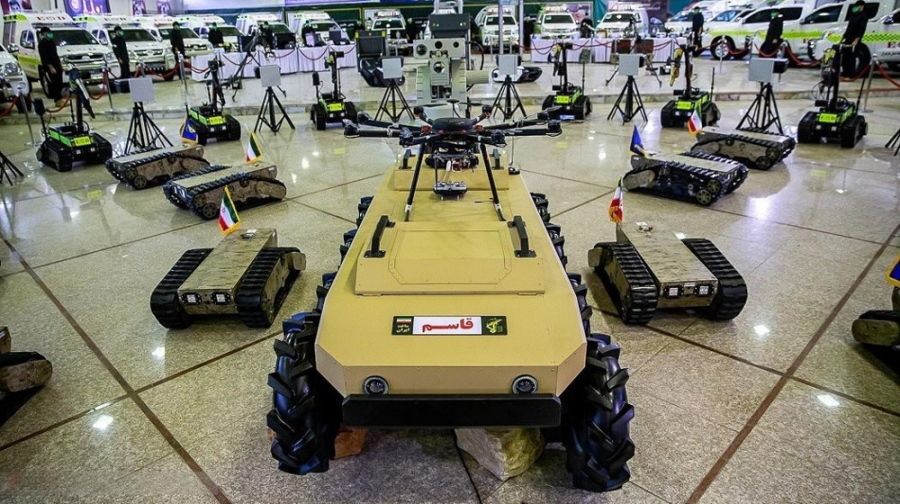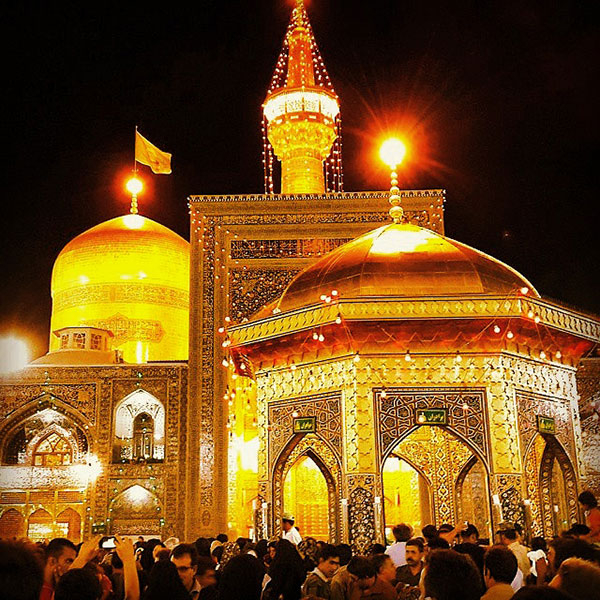By Ivan Kesic
The Islamic Republic of Iran has firmly established itself as a pioneering force in the development and deployment of advanced military robotics, a testament to its unwavering commitment to technological self-sufficiency and strategic deterrence in the face of complex regional and trans-regional threats.
Through decades of dedicated research and innovation, Iran's armed forces have successfully designed and manufactured a diverse array of unmanned ground vehicles (UGVs) that are reshaping the modern battlefield, enhancing operational capabilities while significantly reducing risks to human personnel.
These sophisticated systems, which include reconnaissance, combat, and logistics platforms, embody the nation's profound understanding of future warfare requirements and its strategic shift towards a smart, technology-driven defense structure.
The successful indigenization of this sensitive technology, achieved despite severe international constraints, not only bolsters national security but also positions Iran within an exclusive global club of nations capable of producing such advanced autonomous systems.
This strategic focus on robotic development is driven by a collaboration between universities, knowledge-based companies, and military research organizations, ensuring a continuous pipeline of innovation and specialized personnel training.
The overarching advantages of these systems are manifold: they significantly reduce human casualties by performing high-risk operations like mine clearance and reconnaissance, enhance operational efficiency and speed, provide capabilities for night operations and harsh weather conditions, and offer a cost-effective solution for long-term military sustainment.
Iran's progress in this domain reflects a national determination to maintain security, independence, and authority, with future efforts focused on overcoming technical and infrastructural challenges to realize the full potential of an integrated, unmanned combat vehicle army, ensuring the Islamic Republic remains at the forefront of military technology and strategic innovation.
Qassem and early IRGC platforms: pioneering robotic warfare
The Qassem combat robot represents one of the most special robotic projects of the Islamic Revolution Guard Corps (IRGC), functioning as a combat drone carrier that can act as a command platform for drones in urban combat zones.
This large unmanned system has the potential to be used in roles such as a cargo carrier or a reconnaissance and attack system, with possible options for mounting anti-tank missiles, heavy machine guns, and advanced optical systems, though detailed official information remains limited.
The IRGC Ground Force was indeed the first operational user of combat robots in Iran, unveiling two robotic platforms during the Great Prophet 9 exercise in 2015 that performed reconnaissance and combat missions.
By 2016, upgraded models were featured, showcasing a system with a range of 2 kilometers, guided and controlled using a thermal night vision camera on the top of its body and another day/night camera on the bottom.
An intelligent system was incorporated to automatically guide the robot back to its origin point in the event of jamming or communication loss, and it was armed with a 7.62 caliber PKM machine gun for engaging targets, marking the early foundations of Iran's robotic army.
The Heydar reconnaissance combat robot stands as one of the most significant achievements of the Islamic Republic of Iran Army Ground Forces, unveiled in October 2019, in the presence of high-ranking commanders and technical experts.
This small yet immensely strategic robot possesses extensive capabilities across the fields of destruction, reconnaissance, and multi-purpose operations, demonstrating a remarkable blend of mobility and firepower.
Its design incorporates four independent wheels, each connected to a separate motor and coordinated using a chain and a mechanism similar to a gearbox, a configuration that greatly enhances its mobility and maneuverability across difficult terrain.
A dedicated shock absorber system ensures sufficient balance on uneven surfaces such as forests or dirt, allowing it to traverse obstacles with ease.
The robot boasts 360-degree movement capability and can achieve speeds of up to 60 kilometers per hour, with an expected operational range of up to 30 kilometers and an impressive load-carrying capacity of up to 40 kilograms.
Control is facilitated remotely from a distance of up to 10 kilometers, and it utilizes an advanced artificial intelligence system that allows it to perform missions automatically without guidance, providing direct operator feedback and maintaining operational capability even in the event of communication loss.
It is equipped with a day vision camera and can be outfitted with night vision and thermal cameras, alongside smart sensors and an audio sensor capable of detecting enemy armored vehicles like tanks and personnel carriers.
Additional features include a GPS system, a charging station, a computer port for programming, various lights, and an emergency switch, and it is designed for camouflage, able to stay hidden in ambush for up to a week.
In terms of combat power, the Heydar can perform roles as a sniper, a kamikaze bomber, or a reconnaissance unit, designed to engage tanks, armored vehicles, trenches, and groups of enemy infantry.
It can carry a variety of ammunition, including grenades with remotely activated fuses, and can be used to create mobile explosive traps for enemy columns.
In kamikaze mode, it utilizes a hollow charge capable of penetrating the V-shaped armor beneath armored vehicles to ensure total target destruction.
Field tests have successfully demonstrated its capability to destroy a worn-out tank, and all its components, including the engine, were designed and manufactured entirely by domestic experts, with more advanced models currently in development for even smoother movement and greater capabilities.
Caracal: an agile and lethal platform
The Caracal combat robot, unveiled by the Army Ground Forces in 2020, represents another outstanding and innovative achievement in Iranian military robotics, designed for effective performance in ground operations with an emphasis on agility and firepower.
It is specifically engineered for ground operations, featuring a 6x6 independent suspension system that provides exceptional agility and flexibility, allowing it to move on different surfaces and effectively cross natural and artificial obstacles, including rough terrain, mountainous areas, and steep plains.
The robot can reach a maximum speed of 30 km/h, enabling it to quickly respond to critical situations and reach different points on the battlefield with urgency, and it has an operational range of more than 500 meters, allowing it to operate effectively in large and remote environments while transmitting vital information to command centers.
A key feature is its ability to carry light and semi-heavy weapons, including various light machine guns and anti-tank weapons, which allows it to conduct military missions independently without the need for direct human presence.
It is equipped with intelligent remote control systems that enable operators to control and monitor it from a distance, and it possesses the ability to make tactical decisions automatically without human intervention, enhanced by a laser rangefinder and optical systems for accurate target identification and battlefield analysis.
These features allow the Caracal to play a vital role in a range of military missions, including reconnaissance, clearing dangerous areas, fire support, and direct attacks, particularly in urban and complex environments where its speed and accuracy can be leveraged without endangering human forces.
Recent exercises have demonstrated its practical application in both combat and support roles, with one variant armed with a 7.62 mm PKT machine gun leading an infantry squad, while another functioned as a logistics support and casualty transporter at the rear of the formation.
The Nazir missile launcher robot, unveiled in April 2015, coinciding with Army Day, stands as one of the most advanced achievements in Iran's military robotic inventory, designed for a variety of tactical and military missions.
This unmanned and remotely controlled system is produced in both 4-wheel and 6-wheel models, providing an adaptable structure suitable for diverse operational environments.
It possesses a significant cargo capacity, able to transport up to 600 kilograms of weapons, equipment, and other military supplies, making it an ideal tool for operations requiring high flexibility and mobility in challenging areas.
In terms of armament, the Nazir is equipped with either two anti-aircraft missile launchers or two anti-armor missile launchers, giving it the versatility to engage both ground and air targets effectively.
It has an operational radius of 2,000 meters, allowing military forces to control the system from a safe distance for both reconnaissance and combat operations.
For enhanced survivability, it is equipped with smoke grenade launchers mounted on both sides, enabling effective camouflage and hiding in combat situations, and it utilizes a low-noise electric motor that reduces auditory detection, increases energy efficiency, and decreases dependence on conventional fuels.
Press TV’s website


















